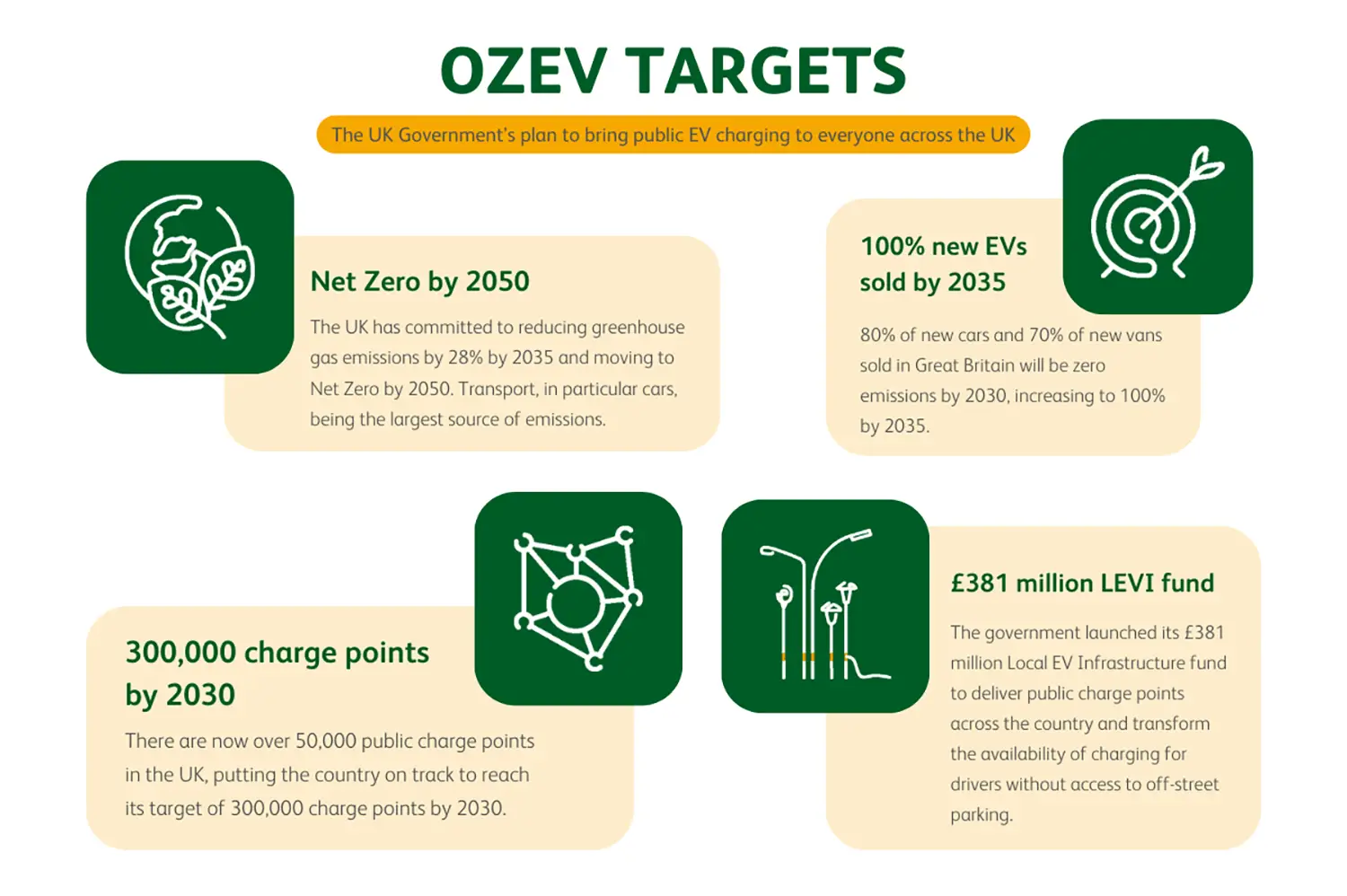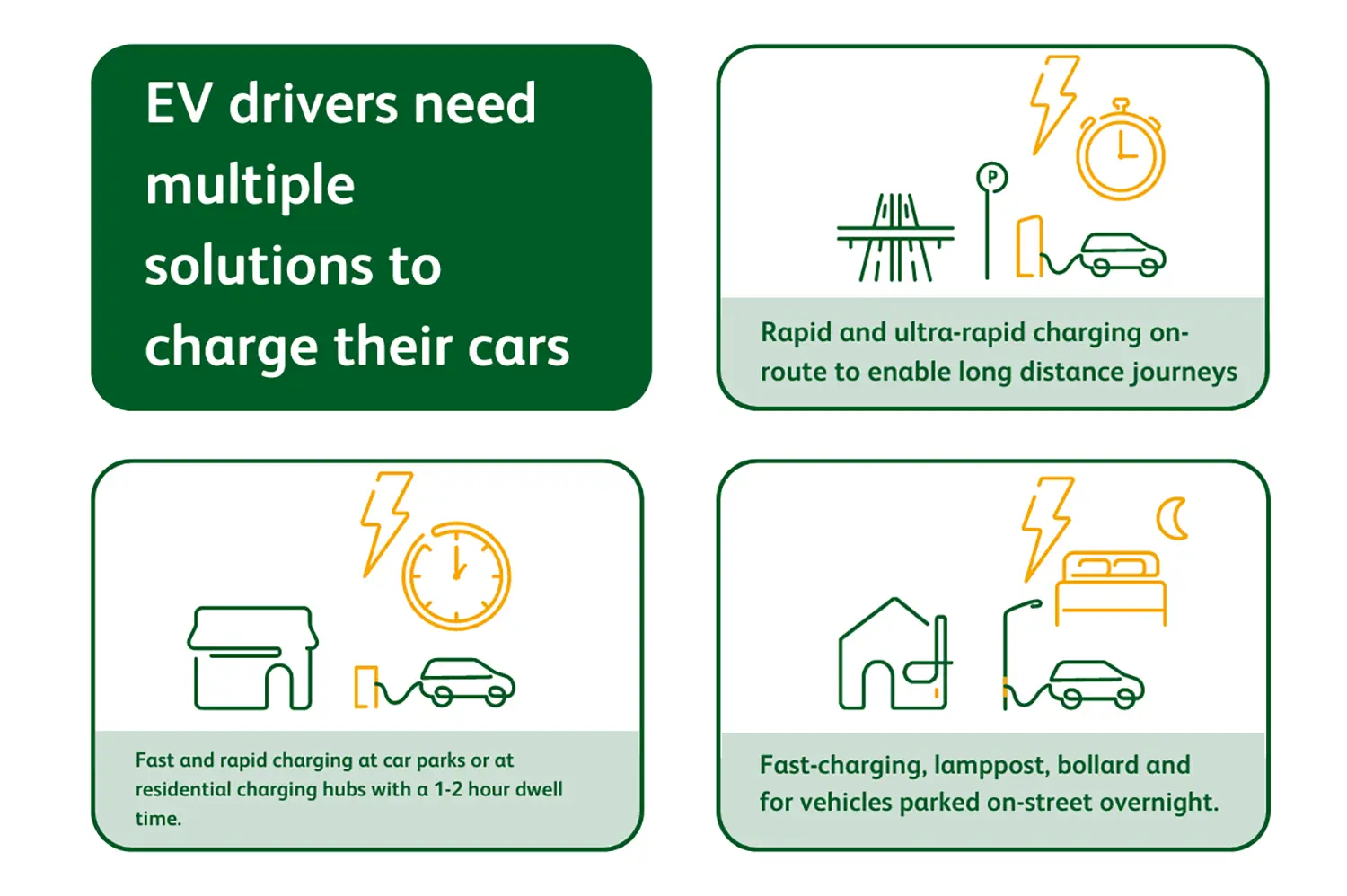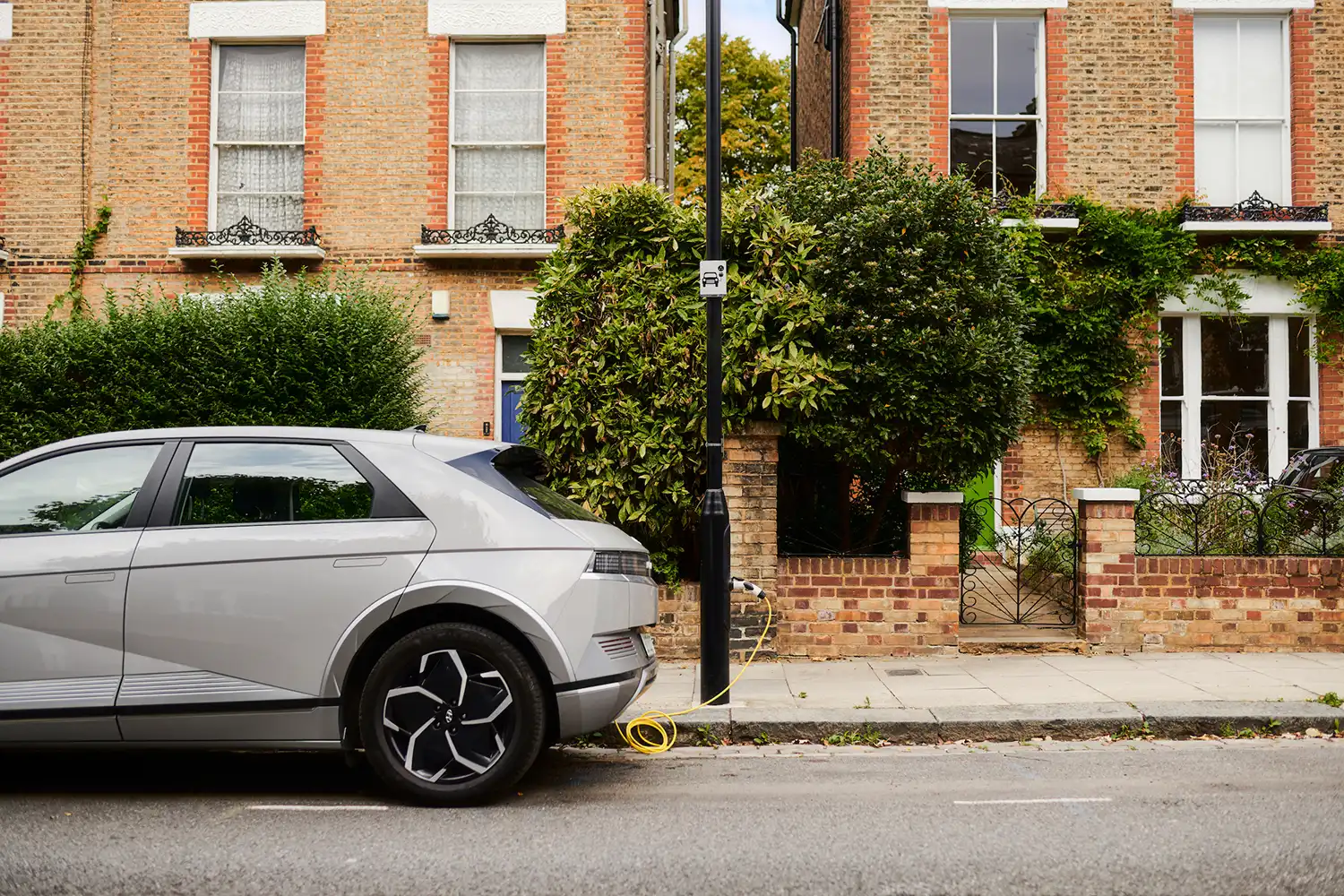In March 2024, the Department for Transport (DfT) and Office for Zero Emission Vehicles (OZEV) announced funding for public EV charging infrastructure to an additional 44 UK Councils. As the number of EVs on UK roads continues to rise, accounting for over 16% of the new car market in 2023, it is vital that charging infrastructure keeps pace, offering drivers without access to private charging an easily accessible way to stay on the move, and mitigating range anxiety for those making long journeys. In this piece, ubitricity’s MD explains a few of the reasons why now is the time to expand charging infrastructure rollouts, making best use of available funding and quick-to-deploy charging technologies.
With the launch of the zero-emission vehicle (ZEV) mandate in early 2024, the UK government proposed one of the most ambitious regulatory frameworks for the switch to electric vehicles of any country in the world. The ZEV mandate will require 80% of new cars and 70% of new vans sold to be zero emission by 2030, and 100% by 2035.
The widespread adoption of EVs, in line with these targets, hinges not just on the availability of affordable electric vehicles, but also on the accessibility and convenience of charging infrastructure. With an estimated 8 million UK homes lacking a private parking space with access to private off-street charging, the rapid expansion of on-street charging infrastructure is necessary to ensure convenient and equitable access to charging. There is a combination of factors driving the need for large-scale rollouts of on-street EV charging infrastructure to help realise the government’s ambitions or a successful transition to a cleaner, greener future, these include:
The growing popularity of EV
With continuing advances in technology, EVs are becoming more affordable, offering longer driving ranges, and boasting improved levels of technology, performance, and driver comfort versus their internal combustion engine equivalents. Against this backdrop, the UK is witnessing a generational shift as drivers continue to embrace the change to EV – with EVs making up 16% of all new car sales in 2023. Moreover, ambitious emission targets and regulations, as well as increased government funding, are incentivising manufacturers and consumers alike to transition towards EVs.

How charging infrastructure can help overcome range anxiety
Despite the surge in EV adoption, range anxiety remains a significant barrier for some. Unlike traditional internal combustion vehicles, EVs rely on charging infrastructure to replenish their batteries. While home and overnight lamppost charging addresses the needs of many EV owners, long-distance travellers may still require access to charging mid-journey. A fully functioning EV charging network to best support the needs of EV drivers will need a mixture of standard, fast and rapid charge points to suit the varying demands of EV drivers.
Equity and inclusivity
Expanding on-street EV charging infrastructure is not only about environmental sustainability but also about equity and inclusivity. Limited access to private charging facilities disproportionately affects low-income communities, renters, and those without off-street parking. In addition, a survey commissioned by the Department for Transport concluded it was “considered essential for charging points to be located within a 5–10-minute walk from these locations. This was particularly important for parents of small children, people with disabilities and women, who felt they need to park as close to home as possible.” By deploying public charging infrastructure on-street, councils can work to ensure that all residents have equal access. This inclusive approach promotes social equity while advancing the transition towards EV use.
Charging near home when you can’t charge at home
By integrating charge points into existing street furniture such as lampposts and bollards, at the roadside, in car parks and other public spaces, EV drivers can easily top up their vehicles while going about their daily routines or charge overnight close to their homes. This accessibility is particularly important for those who lack private parking spaces with dedicated EV charging.
Overcoming challenges and barriers
Despite its numerous benefits, the widespread deployment of on-street EV charging infrastructure still faces challenges. These include regulatory hurdles, technical constraints, and the need for coordination among stakeholders. However, with proactive policies, public-private partnerships, and strategic planning, these challenges can be overcome. Local government, urban planners, and industry stakeholders must collaborate to develop scalable solutions which accelerate the rollout of on-street charging infrastructure.

Make the most of your funding
The Office for Zero Emission Vehicles (OZEV) has set ambitious targets for the transition to EV, and large-scale projects for EV charging infrastructure which emphasise the importance of substantial procurement efforts can align with the scale of the challenge at hand and ensure that infrastructure can keep pace with the growing EV market. By opting for larger procurements of more cost-effective chargepoint technology, such as that housed within existing street furniture such as lampposts and bollards, councils can leverage economies of scale, obtaining better pricing and streamlining the planning, implementation, and deployment processes.
Procuring charging infrastructure on a larger scale can not only save councils money, but also maximise efficiency and effectiveness while quickly delivering enhanced equity for all EV users. Rather than conducting multiple smaller procurements over time, a comprehensive approach allows for the rapid deployment of significant numbers of charge points. This not only accelerates the expansion of the charging network but also minimises potential disruptions to residents and reduces administrative burdens on local authorities.
Moreover, equitable access to charging infrastructure is essential for promoting widespread EV adoption and ensuring inclusivity. Concentrating charging points in only a few areas disadvantages residents in other areas and can create unnecessary barriers to EV ownership. By implementing large-scale, wide-reaching projects, councils can ensure that all residents have equal access to convenient charging facilities, regardless of where they live.
By prioritising larger procurements for on-street EV charging infrastructure councils can meet the growing demand, maximising efficiency, and promoting equitable access. With government funding available through schemes such as the On-street Residential Chargepoint scheme (ORCS) and the Local Electric Vehicle Infrastructure (LEVI) fund, there is financial support available for local authorities in England to work with the charge point industry to accelerate the roll out and commercialisation of local charging infrastructure. This represents a strategic investment in sustainable transportation infrastructure that will benefit communities, reduce emissions, and help drive the UK towards its clean energy goals.
If you’re not sure how the ideal charging infrastructure looks like for you, or if you would like to know more about how on-street charging can boost your EV charging infrastructure, get in touch with our expert team and we’ll be happy to guide you throughout the process.

